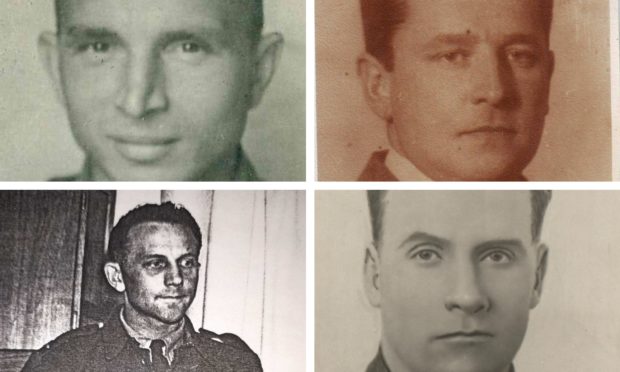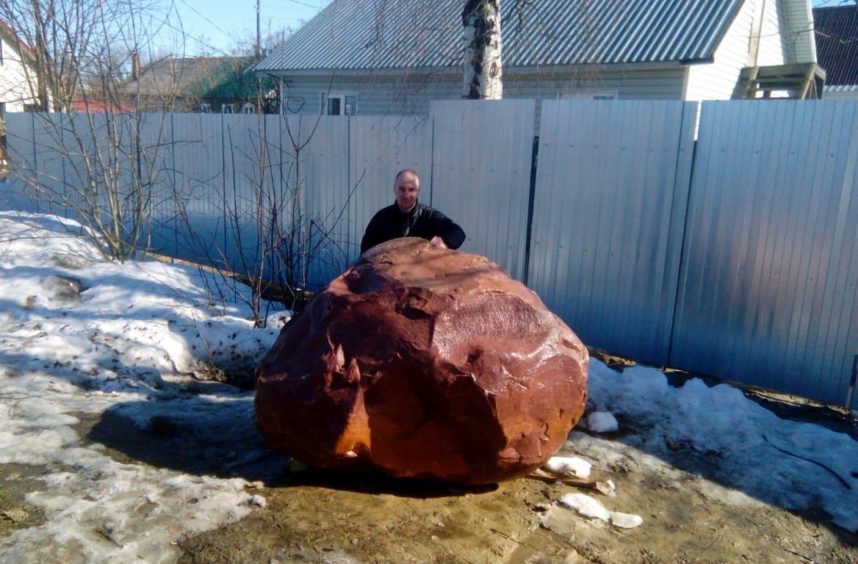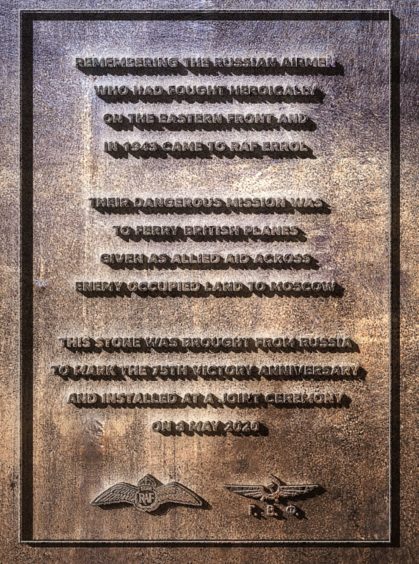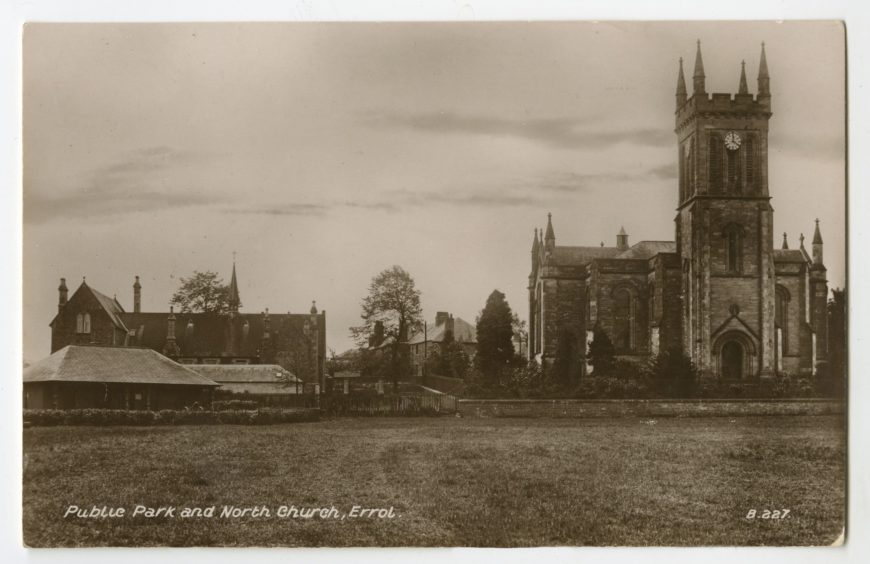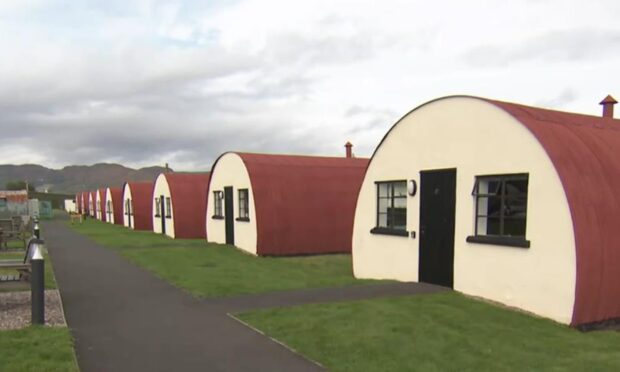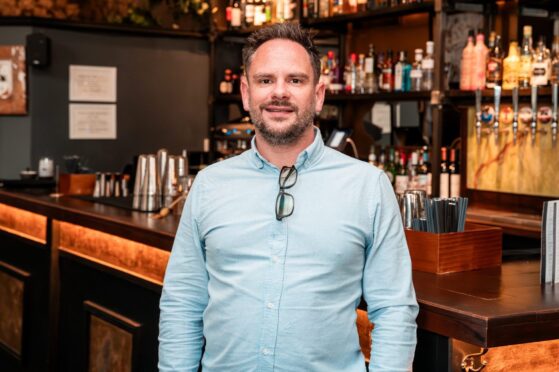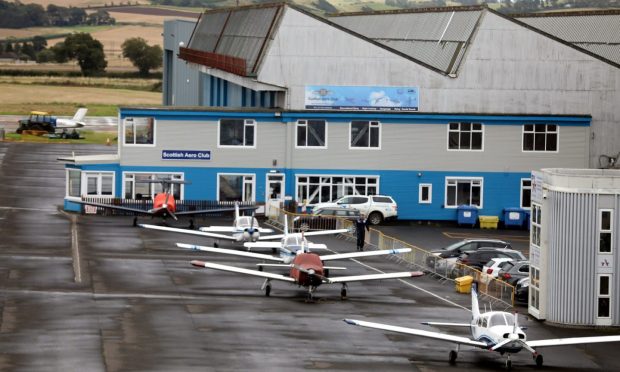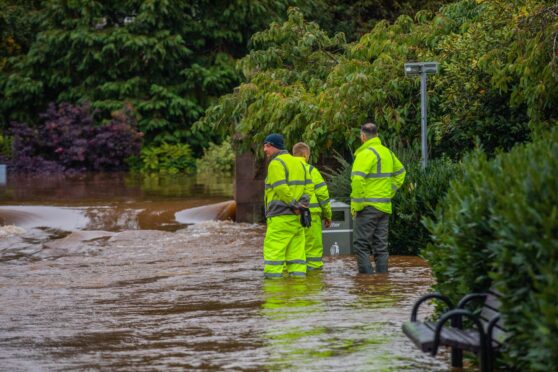A memorial stone for three Russian airmen and their Czech chef who died in a Perthshire plane crash during the Second World War will be transported from Russia to Errol to mark VE Day.
The rare stone, Shoksha crimson quartzite mined in Karelia, carries a symbolic significance in Russia and will be shipped to Scotland using the same route as the Arctic convoys, for the 75th anniversary of the end of the war on May 8.
Adorned with a memorial plaque designed by a grandson of a Moscow airman, Ivan Yudinkov, the tribute will be placed at Errol Parish Church as a permanent site for the annual commemoration.
The crimson rock is the same as that used to build The Tomb of the Unknown Soldier at Red Square in Moscow and work at the Tomb of Napoleon in Paris.
The Shoksha stone is a gift to the Scottish people by the Republic of Karelia, which will open a new museum about the Arctic Convoys on May 7.
The Errol Memorial will be unveiled at the village church on VE Day, along with a special exhibition gifted permanently by Montrose Aviation Museum, at the hall.
The ceremony will be attended by The Provost of Perth and Kinross, The Consul General of Russia, dignitaries from Moscow and Scotland and the descendants of the Russian airmen.
Russian author Anna Belorusova, who first discovered the story of the Russian airmen after her grandfather fought beside them, wanted the memorial placed at the church because of a postcard her relative brought back from his time in Scotland in 1943.
Anna said: “Precisely seven years ago, in February 2013, I came to Scotland with fragments of my grandfather Pyotr Kolesnikov’s puzzle in my hands – an old flight map with his ink marks, a 1943 RAF Christmas menu and some local postcards, among them: Errol Church.
“Little did I know then that it was the beginning of an extraordinary new chapter to his life story and the historic link of the two allies, written together with the people of Scotland.
“Now a Memorial Stone is on its way from Russia to be installed for the 75th Victory Anniversary in Errol, on the site suggested by my grandfather’s postcard, by the Errol Church.
“It is a rock of the world-famous Shoksha stone from Karelia, which will arrive by the symbolic route of the Arctic Convoys.
“The memorial plaque, with two WWII Wings’ insignia – the RAF and the Russian Aviation – is designed by Ivan Yudinkov, the grandson of the Squadron Commander Molodtsov in charge of receiving in Moscow the Albemarles ferried from RAF Errol.”
The Russian Airmen
Aleksandr Gruzdin, Aleksandr Alexeev, Vaslily Dryamin and their Czech chef Frantisek Drahovzal all died when their plane crash landed at Fearnan on May 29 1943.
The airmen were members of the handpicked Moscow Special Assignment Airgroup who arrived in Errol in January 1943 as part of a secret allied operation called Albemarle with Major Aleksandr Gruzdin as their senior officer.
The elite group was formed from the best civilian airmen to perform important tasks of the Red Army High Command and fought the war on the Eastern Front during the Battle of Stalingrad.
Straight from the heat of battle they arrived at RAF Errol to be trained to fly twin-engine Albemarle bombers, given as British allied aid, and ferry them across the enemy-occupied territories to Moscow.
On the day of the crash Gruzdin’s crew, with their Czech cook Frantisek Drahovzal on board, took off for a standard 40-minute flight.
Around Loch Tay the aircraft went into an uncontrolled descent and crashed near Fearnan.
The plane narrowly avoided hitting the village, crashing into the ground just inside the Cow Park, to the east of Clach-an-Tuirc, where it exploded.
A service was held in Fearnan last May to mark the disaster.
